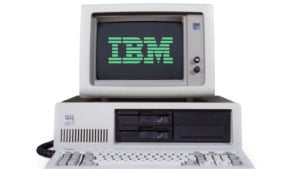With the stock market’s wild swings and worries of recession still looming large for 2024, I understand why so many investors have turned ultra-cautious and may only consider the safest, most rock-solid stocks. That’s especially true, given the market’s steep losses last year. Indeed, no one wants to see their portfolio’s value nosedive again. But with inflation still positive, holding a sizable chunk of cash is also dangerous, given the steadily-eroding purchasing power we’ve seen recently.
So, what’s an investor seeking capital appreciation while looking to minimize risk to do? I think it’s better to split the difference. Keep building those cash reserves and indulge your bargain-hunting instincts in this discounted market, but balance it out with a portfolio anchored by sturdy, dividend-paying stocks you can sleep soundly holding for years.
I’ve dug up three such stalwarts with long dividend growth streaks. These companies provide steady (if unsexy) share appreciation, and durable, highly profitable business models poised to keep churning out slow yet steadily-rising earnings, even during a downturn. They’re companies you know and trust that should deliver roughly 5-15% annualized total returns over time with below-average volatility. Those may be lackluster gains for sure, but that’s precisely the point.
So, if you value capital preservation but also want to secure single-digit returns and build a cash cushion, these three ultra-safe picks deserve your attention.
IBM (IBM)

IBM (NYSE:IBM) reported third-quarter earnings that beat expectations, reporting earnings per share of $2.20 and revenue of $14.75 billion. This stalwart tech company remains one of the most stable names on the market, even as it pivots into higher-growth areas like cloud, AI, and quantum computing. With its sizable recurring revenue base from an impressive global clientele, Big Blue can weather economic storms better than most. That sticky revenue allows IBM to generate profits to safely fund its investments in next-generation technologies. I believe quantum computing could specifically be IBM’s most significant growth driver this decade. As one of the pioneers in this space, IBM is positioned to capitalize immensely once quantum reaches commercial viability.
In the meantime, shareholders can collect IBM’s generous 4.1% dividend yield. Impressively, IBM has increased its dividend each and every year for 28 straight years now. Of course, quantum computing promises tremendous upside, but IBM’s downside protection via its enterprise contracts makes it a compelling lower-risk, high-reward investment today.
My take is that Arvind Krishna has IBM pointed in the right direction. Krishna is sharpening IBM’s focus on hybrid cloud and AI. These are two massively important, fast-growing areas. However, IBM isn’t abandoning its mature businesses that pay the bills either.
The company is applying AI and automation technologies across its entire business to drive efficiency and boost competitiveness. So, while embracing next-gen opportunities, IBM is fortifying its foundations. Therefore, IBM offers investors the best of both worlds today – stability and growth.
Big Blue should reliably churn out steady mid-single-digit total returns this decade from dividends and moderate share appreciation. Yet, substantial outperformance is also possible with its big bets on AI and quantum. That’s an appealing risk-reward tradeoff for more conservative investors right now.
Consolidated Edison (ED)

Con Edison (NYSE:ED) recently delivered adjusted Q3 earnings per share of $1.62, beating estimates by 2 cents, though revenue fell significantly, mainly due to the Clean Energy Businesses sale. In my opinion, NY-based utility giant Con Ed makes for one of the most dependable stocks around. With operations centered in America’s economic hub, Con Ed enjoys a durable moat and profit visibility many of its peers don’t.
Of course, all utilities tend to fare relatively well during recessions thanks to stable demand. However, Con Ed’s service territory spanning New York City and Westchester County provides exceptional resilience. Through even the worst downturns, Con Edison keeps humming as businesses, residents, and tourists consume plentiful energy.
Therefore, I expect Con Ed to deliver long-term earnings, cash flow, and dividend growth fairly consistently moving forward. Management just raised 2023 guidance. Concurrently, Con Ed targets dividend hikes aligned with earnings growth.
While lacking flash and eye-popping returns, Con Ed should churn out steady mid-single-digit total returns-driven by 4-5% annual dividend increases. New York’s ambitious renewable energy goals also offer investment opportunities for Con Ed’s rate base. With Con Ed’s premium yield above 3.5%, this ultra-safe play warrants consideration.
Enterprise Products Partners (EPD)

Enterprise Products Partners (NYSE:EPD) posted adjusted Q3 earnings per share of 61 cents, narrowly missing estimates by 3 cents. But revenue surprised Wall Street despite declining 22% year-over-year to $12 billion. This isn’t alarming, as revenue is likely to inevitably climb back, and these declines are priced in already.
Personally, I believe midstream operator EPD makes for one of the energy sector’s most appealing stocks today. What’s more, Enterprise’s business model inherently minimizes downside risk relative to most oil and gas names. Enterprise earns profits mainly from long-term contracts instead of spot commodity prices as a middleman. Therefore, its cash flows hold up much better when energy markets swoon compared to volatile producers and servicers.
Really, as America’s shale boom continues driving hydrocarbon output higher, this company is likely to win either way. And now boasting a 7.5% yield after 26 consecutive annual hikes, EPD stock offers a rock-solid payout with ample coverage.
In my view, management is also smartly positioning the company’s asset footprint to capitalize on America’s emerging role as a global energy superpower. This quarter’s new project announcements to expand EPD’s NGL handling capabilities illustrate that foresight. Consequently, EPD stock appears to be poised to deliver steady 6-8% annual cash flow growth this decade, even if oil prices stagnate around $70-$80 per barrel.
On the date of publication, Omor Ibne Ehsan did not have (either directly or indirectly) any positions in the securities mentioned in this article. The opinions expressed in this article are those of the writer, subject to the InvestorPlace.com Publishing Guidelines.
